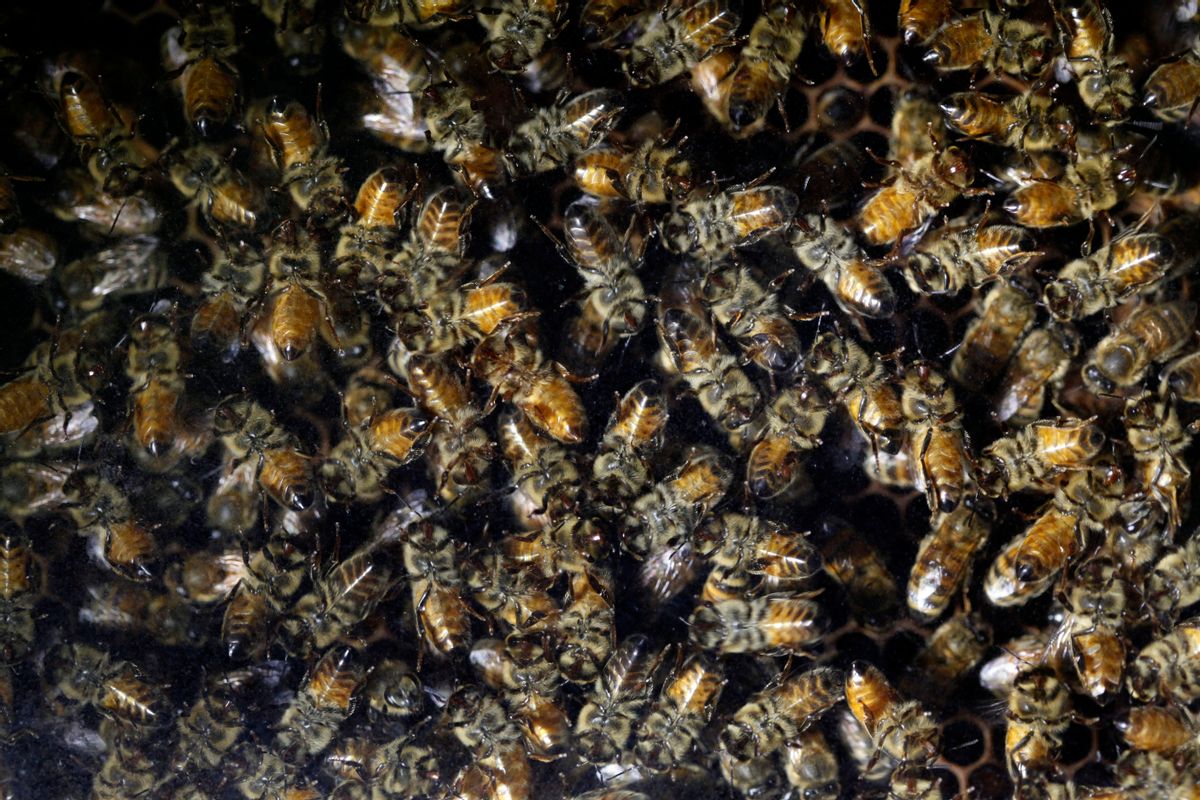 High in the Himalayas, there's a kind of honey that can get you high, but you might have to fend off outraged Himalayan honey bees while hanging off a 300-foot cliff to get it. And it's kind of rough stuff; you'll go through intense physical purging before the mental weirdness kicks in.
High in the Himalayas, there's a kind of honey that can get you high, but you might have to fend off outraged Himalayan honey bees while hanging off a 300-foot cliff to get it. And it's kind of rough stuff; you'll go through intense physical purging before the mental weirdness kicks in.
Still, the stuff is going for as much as $166 a pound on the black market because of the high, according to the Hallucinogenic Honey Hunters episode of National Geographic's Explorer documentary series. The episode chronicled an average day of Himalayan honey hunting, the hunter climbing a rope through clouds of smoke hundreds of feet up the cliffside, swatting away swarms of angry, oversized bees as he successfully steals his sticky treasure.
The Himalayan honeybee is the largest bee in the world, but its diet is what makes its honey so special. These bees happen to browse on local rhododendron trees that bloom on north-facing hillsides each spring, and the nectar from the flowers contain gryanotoxins that alter mental states and produce hallucinations by binding to sodium channels in your cell walls.
The Food and Drug Administration is hip to hallucinatory honey with a web page describing honey intoxication (also known as mad honey intoxication or rhodendendron poisoning). It doesn't sound that fun:
The intoxication is rarely fatal and generally lasts for no more than 24 hours. Generally the disease induces dizziness, weakness, excessive perspiration, nausea, and vomiting shortly after the toxic honey is ingested. Other symptoms that can occur are low blood pressure or shock, bradyarrhythima (slowness of the heart beat associated with an irregularity in the heart rhythm), sinus bradycardia (a slow sinus rhythm, with a heart rate less than 60), nodal rhythm (pertaining to a node, particularly the atrioventricular node), Wolff-Parkinson-White syndrome (anomalous atrioventricular excitation) and complete atrioventricular block.
The FDA doesn't mention the fun part. But Jenge, the local Kulung trader who manages the Sadhi honey hunters, provided a fuller account to filmmaker Renan Ozturk.
Within a few minutes of eating the honey, he says, you are overcome with an urgent need to defecate, urinate and vomit. "Normally we see a doctor to have bad things taken out of our bodies, but the honey does this for us. That's why we take it," he explains.
Then things get interesting. After purging, "You alternate between light and dark. You can see and then you can't see," Jenge said, adding that a sound of "jam jam jam" pulses in your head like the droning of a beehive. Then you lose all motor function.
"The paralysis lasts for a day or so," he said.
Still not interested? It's supposed to enhance sexual performance, too.
To watch the video, click here.



Shares